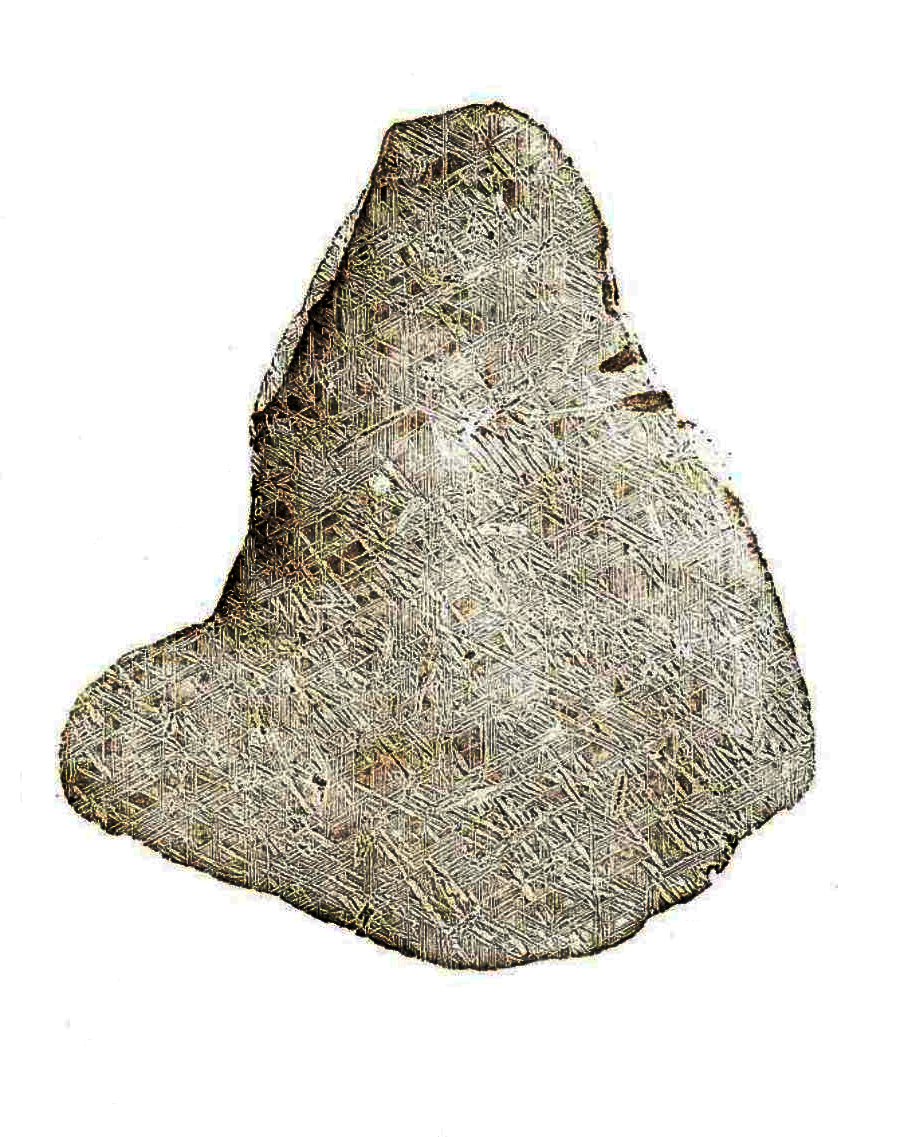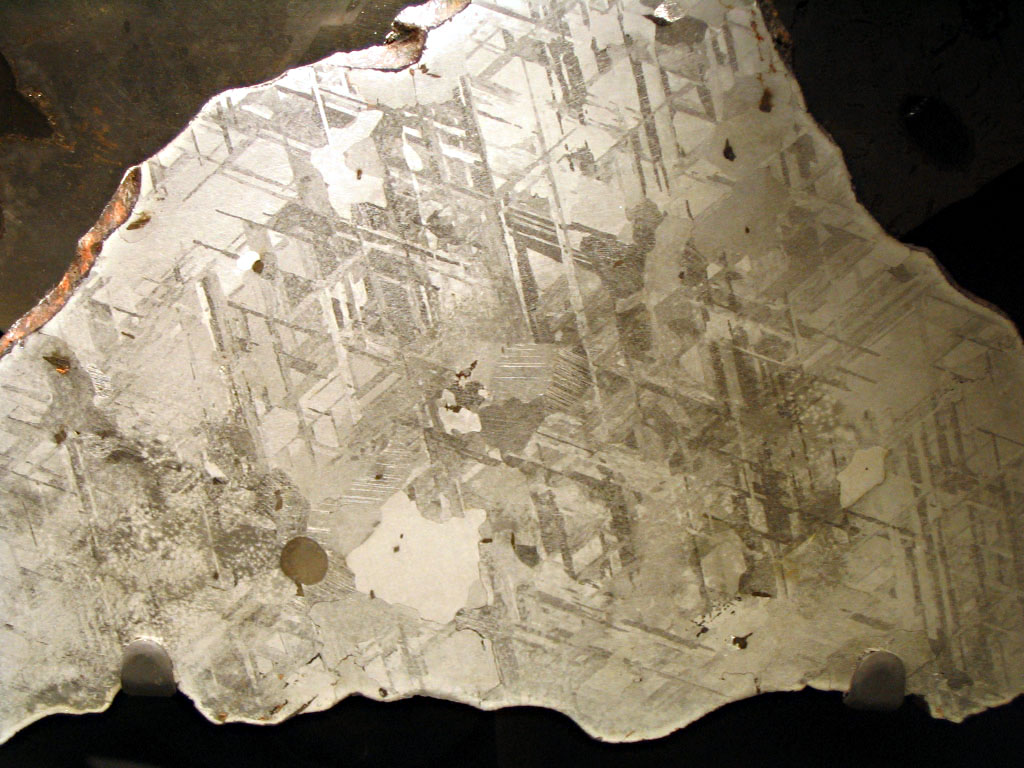Alois Von Beck Widmanstätten on:
[Wikipedia]
[Google]
[Amazon]
Count Alois von Beckh Widmanstätten (13 July 1754 – 10 June 1849) was an Austrian printer and mineralogist. His name is sometimes given as Alois von Beckh-Widmannstätten or Aloys Joseph Franz Xaver Beck Edler von Widmanstätten. He is known for recognizing a unique pattern of cross-hatching lines on the surface of iron-rich meteorites, now called Widmanstätten patterns, resulting from the cooling and crystallization of interstitial minerals. A crater on the moon is named after Widmanstätten.


p.184
/ref> but Thomson's publication escaped Schreibers' notice.O. Richard Norton. ''The Cambridge encyclopedia of meteorites''. Cambridge, Cambridge University Press, 2002. .

Working life
Von Widmanstätten was born inGraz
Graz (; sl, Gradec) is the capital city of the Austrian state of Styria and second-largest city in Austria after Vienna. As of 1 January 2021, it had a population of 331,562 (294,236 of whom had principal-residence status). In 2018, the popul ...
where his family had a printing business and was trained in the printing art by his father. His family owned exclusive printing rights in the Steiermark province, but this was lost in 1784 and Alois sold the business in 1807. In 1804, he ran a spinning mill in Pottendorf, Austria. In 1806 he was invited by the emperor to head a newly founded Imperial Technical Museum or ''Fabriksproduktenkabinett'' begun in 1807. From 1808, he was the director of the Imperial Porcelain works in Vienna.

Widmanstätten pattern
While working at the ''Fabriksproduktenkabinett'', he began to examine iron meteorites along with Karl von Schreibers. They polished and etched the surface of iron meteorites with dilute nitric acid and noticed that it revealed a patterning of cross-hatched lines that came to be called Widmanstätten patterns. He examined by flame-heating a slab ofHraschina meteorite
Hraschina is the official name of an iron meteorite that fell in 1751 near the Hrašćina village in Hrvatsko Zagorje, Croatia. This meteorite is important because it was the first fall of an iron meteorite viewed and reported by a significant n ...
. The different iron alloys of meteorites oxidized at different rates during heating, causing color and luster differences. In 1813 he made imprints of these structures with printing ink and paper. These were unpublished during his life. A print of the structures from the Hraschina meteorite
Hraschina is the official name of an iron meteorite that fell in 1751 near the Hrašćina village in Hrvatsko Zagorje, Croatia. This meteorite is important because it was the first fall of an iron meteorite viewed and reported by a significant n ...
collected in 1751 was used in a supplement to the book ''Über Feuer-Meteore, und über die mit denselben herabgefallenen Massen'' of Ernst Chladni which was published by Schreibers in 1820 as ''Beiträge zur Geschichte und Kenntniss meteorischer Stein und Metallmassen''. Schreibers named the structure after Widmanstätten and the term is widely used in metallurgy.John G. Burke. ''Cosmic Debris: Meteorites in History''. University of California Press, 1986.
The Widmanstätten pattern had been observed previously, in 1804, by the English mineralogist William (''Guglielmo'') Thomson. During the period that he spent in Naples, he discovered these figures by bathing a Krasnojarsk
Krasnoyarsk ( ; rus, Красноя́рск, a=Ru-Красноярск2.ogg, p=krəsnɐˈjarsk) (in semantic translation - Red Ravine City) is the largest city and administrative center of Krasnoyarsk Krai, Russia. It is situated along the Yeni ...
meteorite
A meteorite is a solid piece of debris from an object, such as a comet, asteroid, or meteoroid, that originates in outer space and survives its passage through the atmosphere to reach the surface of a planet or Natural satellite, moon. When the ...
in nitric acid for the purpose of removing rust and he published his discovery in French in the ''Bibliothèque Britannique
The ''Bibliothèque Britannique'' was a monthly journal of the sciences and the arts published in Geneva by Marc-Auguste Pictet, his younger brother Charles, and their friend Frédéric-Guillaume Maurice.
Created in 1796, it covered a wide rang ...
'',Torrens, Hugh S. (2006) "The geological work of Gregory Watt, his travels with William Maclure in Italy (1801–1802), and Watt's "proto-geological" map of Italy (1804)" in: Vai, Gian Battista; Caldwell, W. Glen E., ed.s, ''The Origins of Geology in Italy'' (Boulder, Colorado: The Geological Society of America, 2006) p.184
/ref> but Thomson's publication escaped Schreibers' notice.O. Richard Norton. ''The Cambridge encyclopedia of meteorites''. Cambridge, Cambridge University Press, 2002. .
Named after him
* Widmanstätten patterns of iron meteorites * The crater Widmannstätten on the Moon * 21564 Widmanstätten asteroidSee also
*William Thomson (mineralogist)
William Thomson (1760 – November 1806) was an English mineralogist, who used the name Guglielmo Thomson in Italy in later life. He died in Palermo at the age of 46 years.Gian Battista Vai, W. Glen E. Caldwell. ''The origins of geology in Italy' ...
* Meteorite
A meteorite is a solid piece of debris from an object, such as a comet, asteroid, or meteoroid, that originates in outer space and survives its passage through the atmosphere to reach the surface of a planet or Natural satellite, moon. When the ...
Notes
{{DEFAULTSORT:Widmanstatten, Alois 1753 births 1849 deaths Austrian scientists Counts of Austria Meteorite researchers Austrian mineralogists Austrian metallurgists